Death

At his death on 14 July 1858 he was living on Cork Street. He is buried in Highgate Cemetery. [3]
Atkinson Morley (1781 - 14 July 1858) was a British hotelier. He was responsible for Morley's Hotel, designed by George Ledwell Taylor and which occupied the entire eastern side of London's Trafalgar Square, from 1832, until it was demolished in 1936 and replaced with South Africa House.
Atkinson Morley was born in 1781, the son of David Hatton Morley, who owned the British Coffee House, which was rebuilt by Robert Adam in 1770, at 27 Cockspur Street.
In 1822 he owned the British Hotel at 25 Cockspur Street, but sold it to buy the Burlington Hotel at 19-20 Cork Street, before in 1831-31 building Morley's Hotel at 1-3 Trafalgar Square. [1]
He was a governor at St George's Hospital, and had been Florence Nightingale's landlord, when she lived in Old Burlington Street. [2]

At his death on 14 July 1858 he was living on Cork Street. He is buried in Highgate Cemetery. [3]
He left £5000 to University College London for the Atkinson Morley surgical scholarships. His donation of £100,000 to St George's Hospital "for receiving, maintaining, and generally assisting convalescent poor patients", enabled the Atkinson Morley Hospital to be built in 1869. [3]

Trafalgar Square is a public square in the City of Westminster, Central London, established in the early 19th century around the area formerly known as Charing Cross. The Square's name commemorates the Battle of Trafalgar, the British naval victory in the Napoleonic Wars over France and Spain that took place on 21 October 1805 off the coast of Cape Trafalgar.

William Butterfield was a Gothic Revival architect and associated with the Oxford Movement. He is noted for his use of polychromy.

Mayfair is an affluent area in the West End of London towards the eastern edge of Hyde Park, in the City of Westminster, between Oxford Street, Regent Street, Piccadilly and Park Lane. It is one of the most expensive districts in the world.

Florence Nightingale was an English social reformer, statistician and the founder of modern nursing. Nightingale came to prominence while serving as a manager and trainer of nurses during the Crimean War, in which she organised care for wounded soldiers at Constantinople. She gave nursing a favourable reputation and became an icon of Victorian culture, especially in the persona of "The Lady with the Lamp" making rounds of wounded soldiers at night.
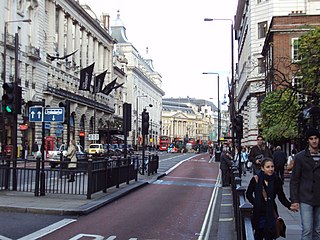
Piccadilly is a road in the City of Westminster, London, to the south of Mayfair, between Hyde Park Corner in the west and Piccadilly Circus in the east. It is part of the A4 road that connects central London to Hammersmith, Earl's Court, Heathrow Airport and the M4 motorway westward. St James's is to the south of the eastern section, while the western section is built up only on the northern side. Piccadilly is just under 1 mile (1.6 km) in length, and it is one of the widest and straightest streets in central London.
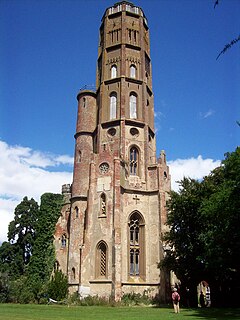
George Ledwell Taylor was an architect and landowner who lived in London.

St George's Hospital is a teaching hospital in Tooting, London. Founded in 1733, it is one of the UK's largest teaching hospitals and one of the largest hospitals in Europe. It is run by the St George's University Hospitals NHS Foundation Trust. It shares its main hospital site in Tooting in the London Borough of Wandsworth, with St George's, University of London, which trains NHS staff and carries out advanced medical research.
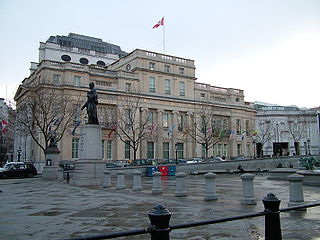
The High Commission of Canada in the United Kingdom is the diplomatic mission of Canada to the United Kingdom. It is housed at Canada House on Trafalgar Square in central London, with an additional Regional Service Centre at 3 Furzeground Way in Stockley Park, Uxbridge.
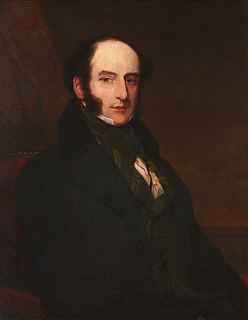
Robert Liston was a Scottish surgeon. Liston was noted for his speed and skill in an era prior to anaesthetics, when speed made a difference in terms of pain and survival. He was the first Professor of Clinical Surgery at University College Hospital in London and performed the first public operation utilizing modern anaesthesia in Europe.

Northumberland Avenue is a street in the City of Westminster, Central London, running from Trafalgar Square in the west to the Thames Embankment in the east. The road was built on the site of Northumberland House, the London home of the Percy family, the Dukes of Northumberland between 1874 and 1876, and on part of the parallel Northumberland Street.

Atkinson Morley Hospital (AMH) was located at Copse Hill near Wimbledon, South-West London, England from 1869 until 2003. Initially a convalescent hospital, it became one of the most advanced brain surgery centres in the world, and was involved in the development of the CT scanner. Following its closure, neuroscience services were relocated to the new Atkinson Morley Wing of St George's Hospital, Tooting.

Cockspur Street is a short street in the City of Westminster, London, SW1 which with a very short part of Trafalgar Square links Charing Cross to Pall Mall/Pall Mall East at the point where that road changes name, opposite the traffic exit from Haymarket. It and all the streets mentioned are part of the A4. It has existed since at least the 16th century along a similar line.

Canada House is a Greek Revival building on Trafalgar Square in London. It has been a Grade II* Listed Building since 1970. It has served as the offices of the High Commission of Canada in the United Kingdom since 1925.
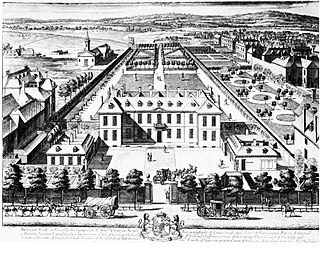
Burlington Gardens is a street in central London, on land that was once part of the Burlington Estate.
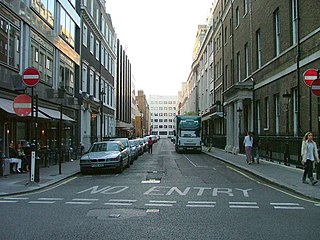
Old Burlington Street is a street in central London that is on land that was once part of the Burlington Estate.

A statue of Edward Jenner, the physician, scientist and pioneer of the world's first vaccine, is located in Kensington Gardens in London. A work of the sculptor William Calder Marshall, the bronze was originally unveiled by Albert, Prince Consort in Trafalgar Square on 17 May 1858, before being moved to its present location in 1862. It is a Grade II listed building.
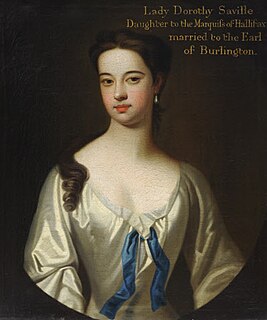
Dorothy Boyle, Countess of Burlington and Countess of Cork was a British noble and court official, as well as a caricaturist and portrait painter. Several of her studies and paintings were made of her daughters. Chatsworth House, which descended through her daughter Charlotte, holds a collection of 24 of her works of art.

Morley's Hotel was a building which occupied the entire eastern side of London's Trafalgar Square, until it was demolished in 1936 and replaced with South Africa House. It was next to St Martin-in-the-Fields Church.
David Hatton Morley was a British coffee house keeper, and owned the British Coffee House at 27 Cockspur Street, London.

Mother Mary Clare Moore was an Irish Sisters of Mercy nun, Crimean war nurse and teacher. She was one of the ten original members of the Sisters of Mercy, and was the founding sister superior of the order's first convent in England.